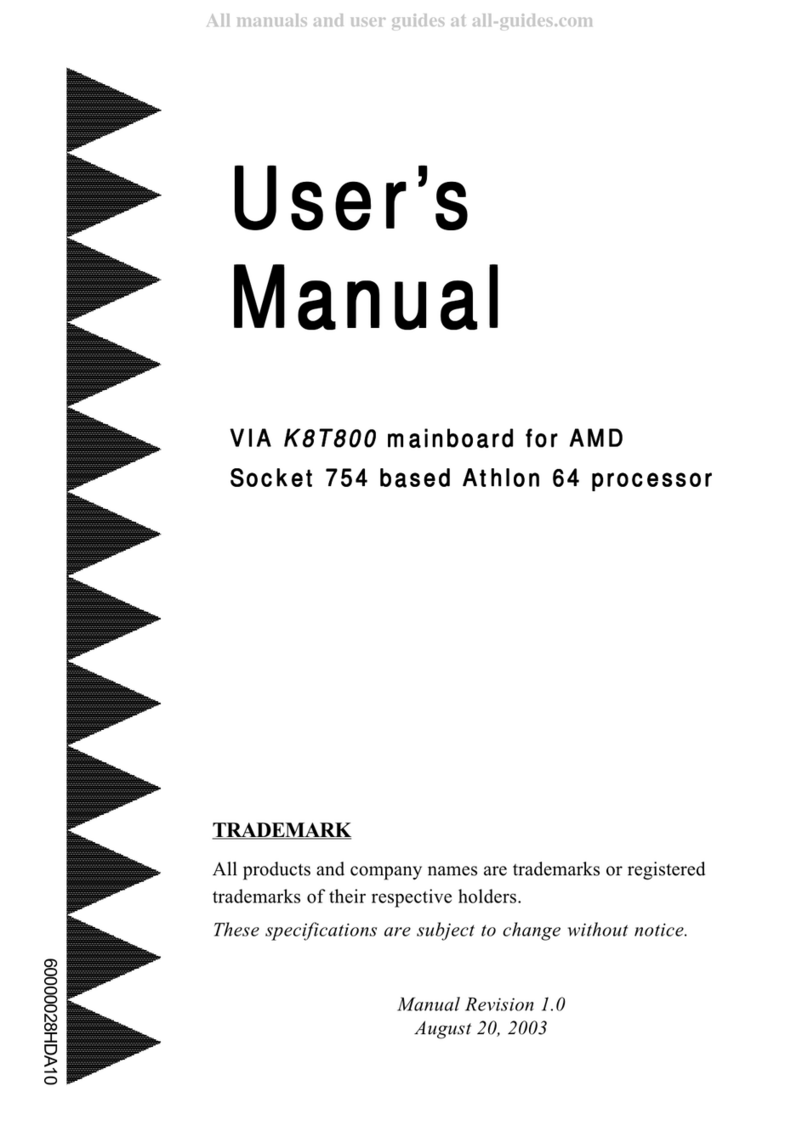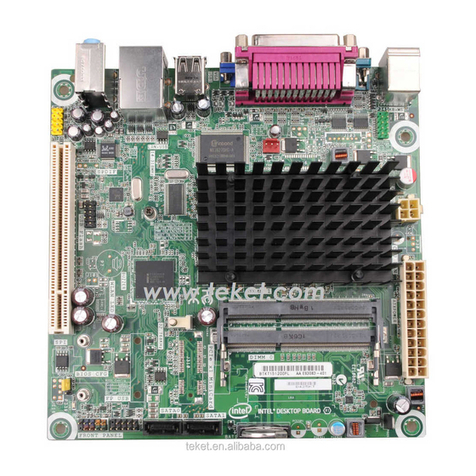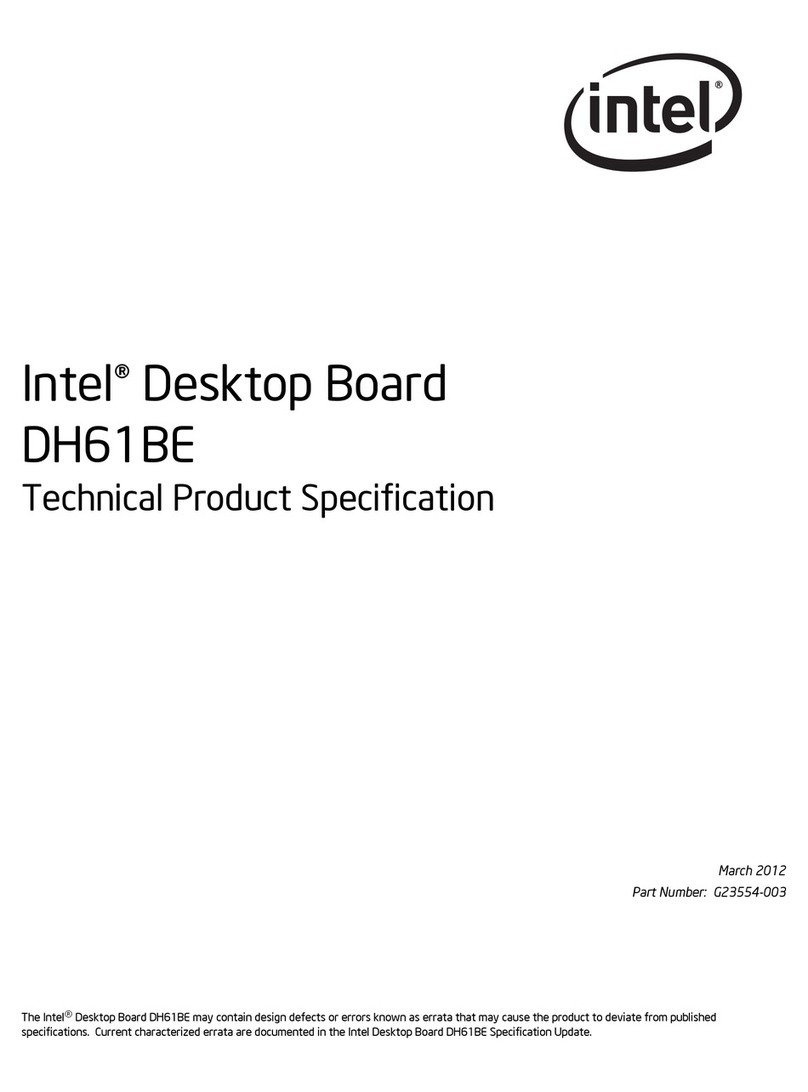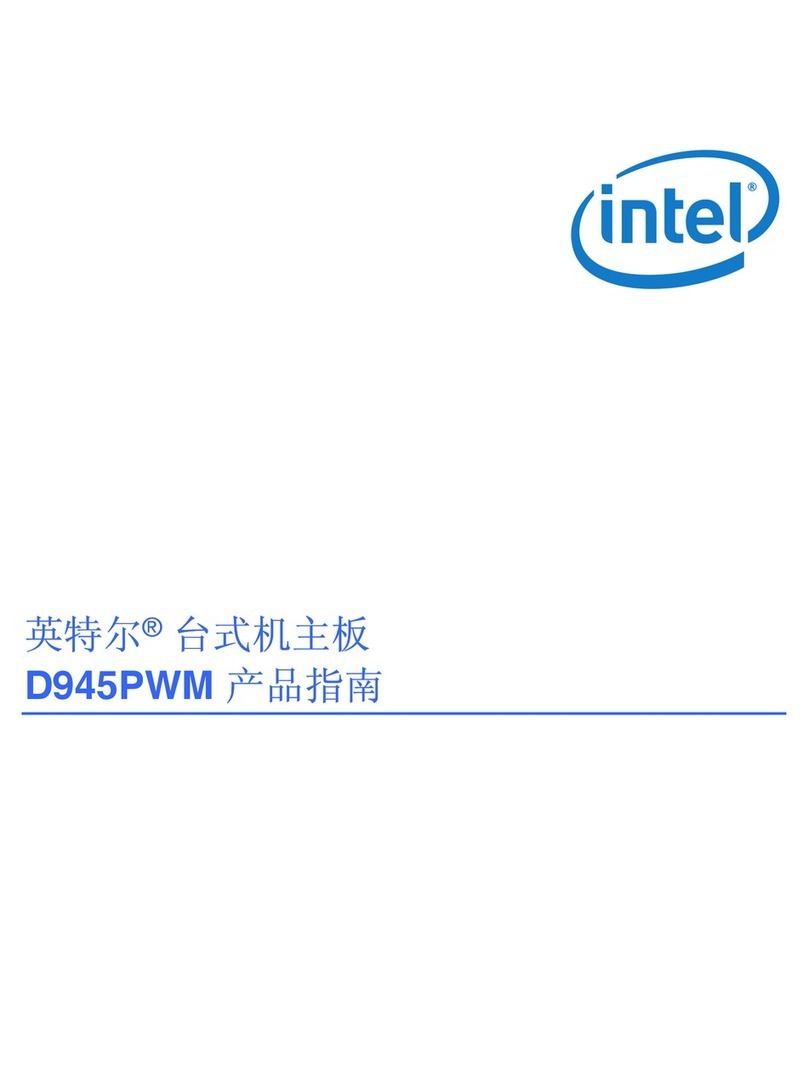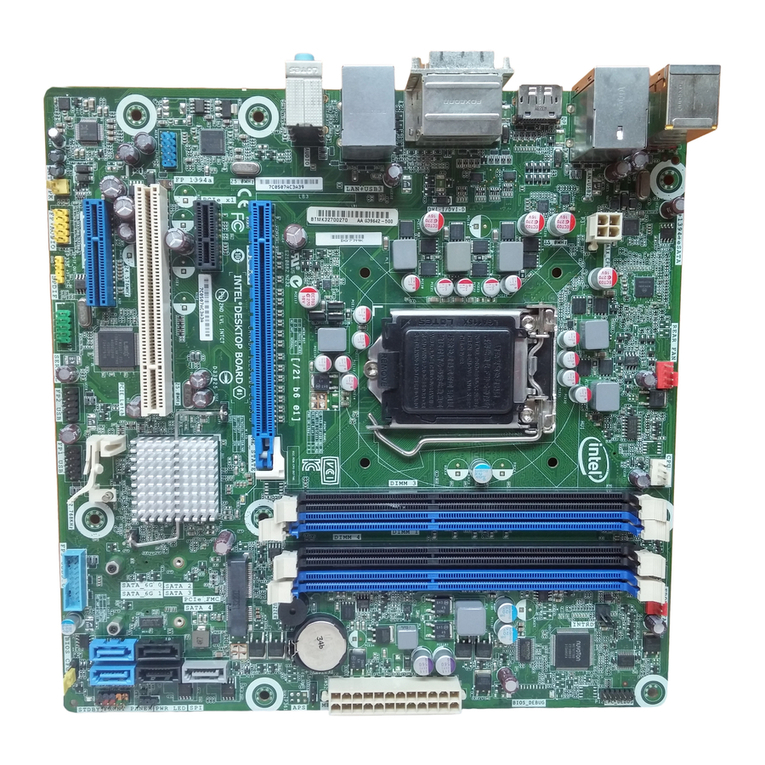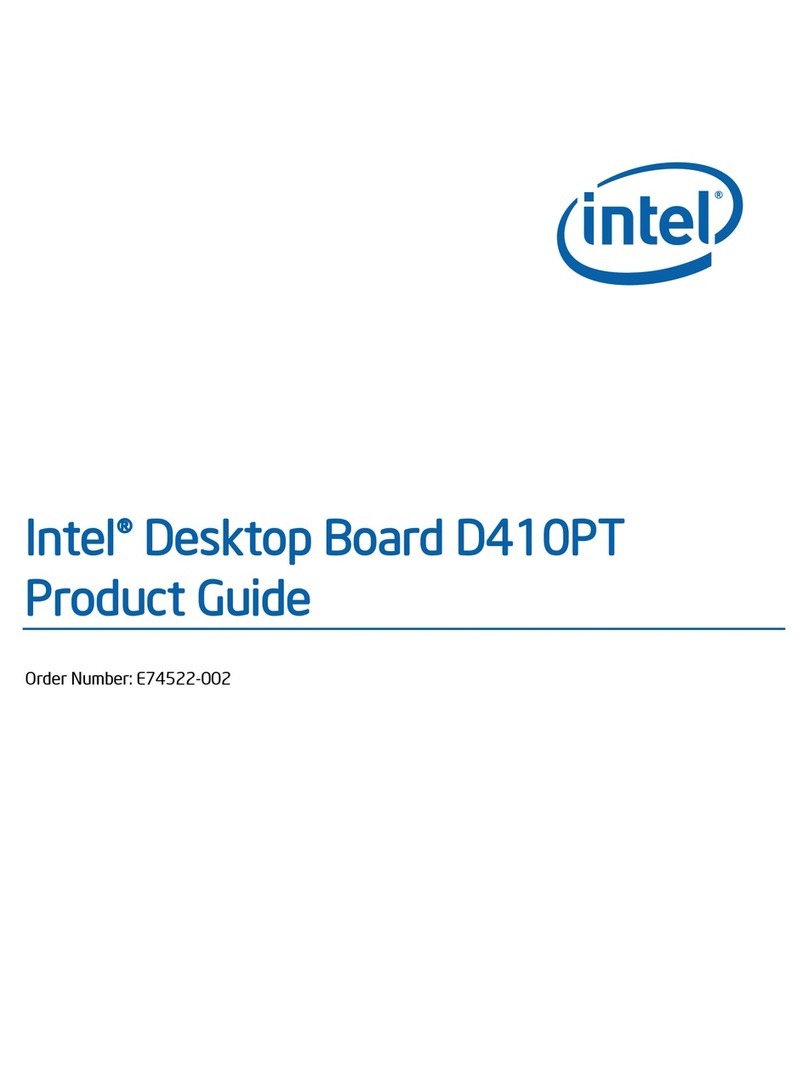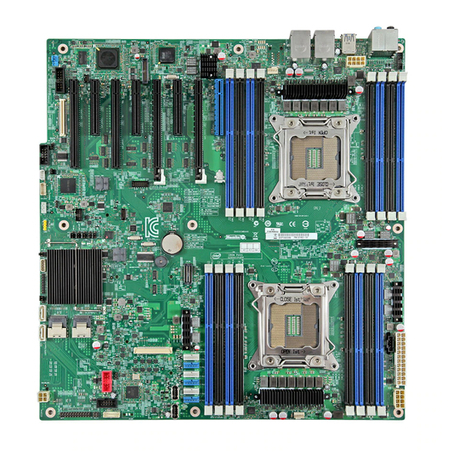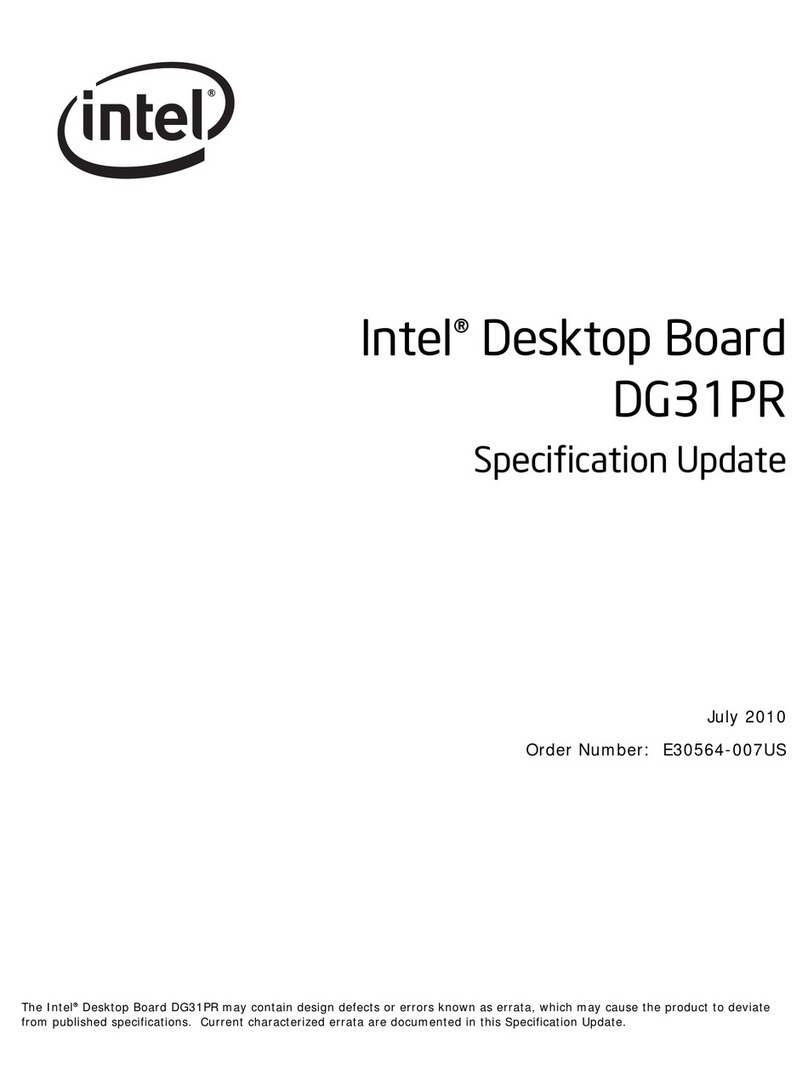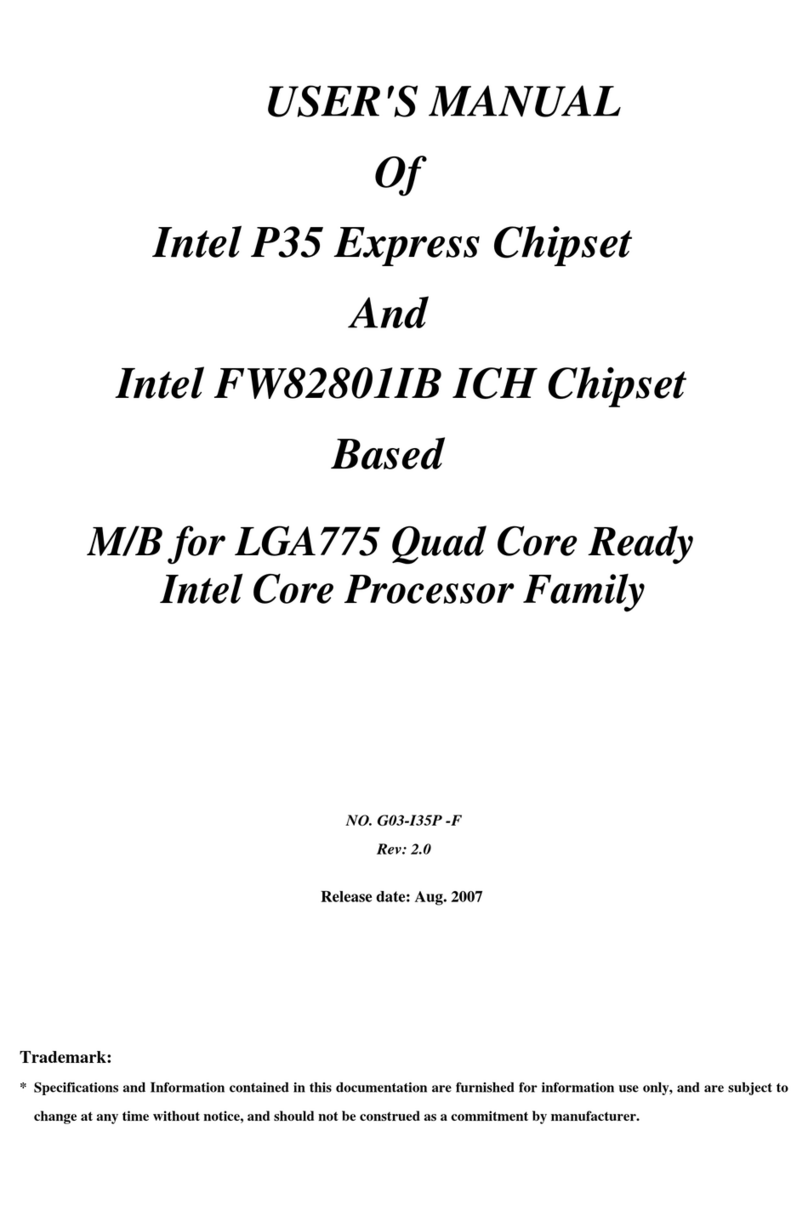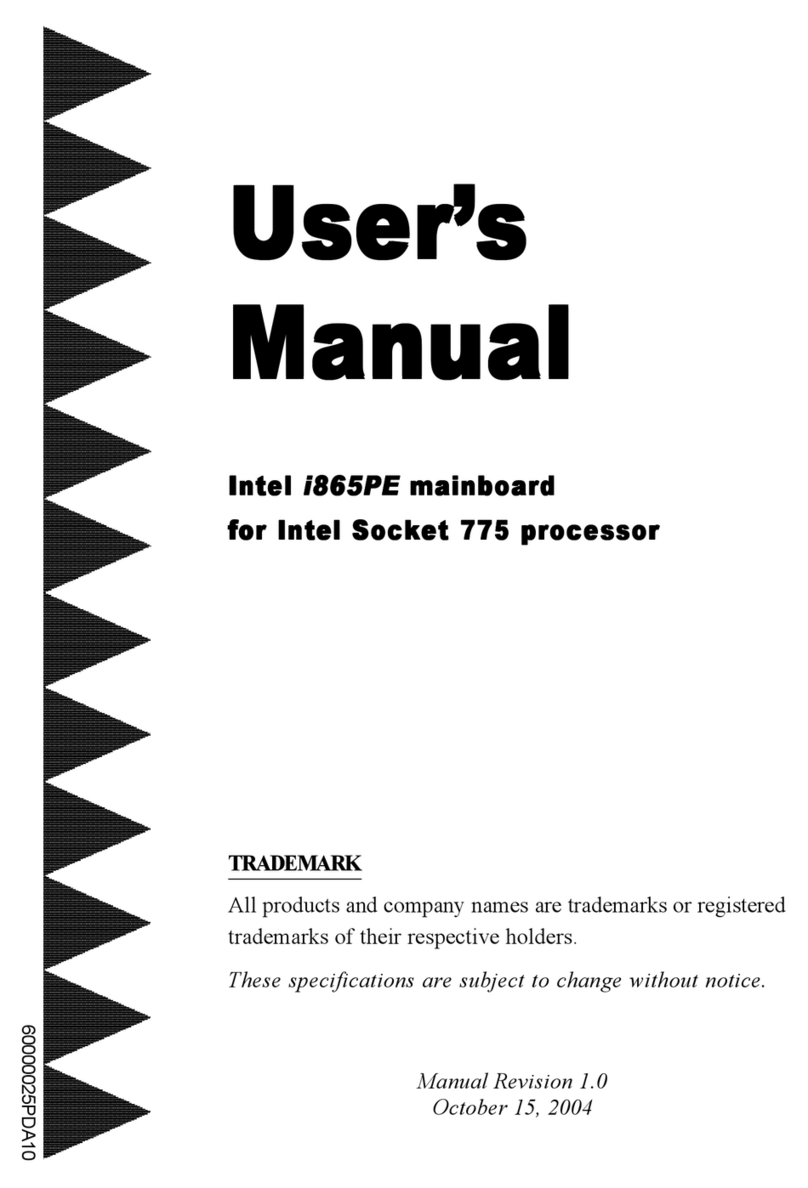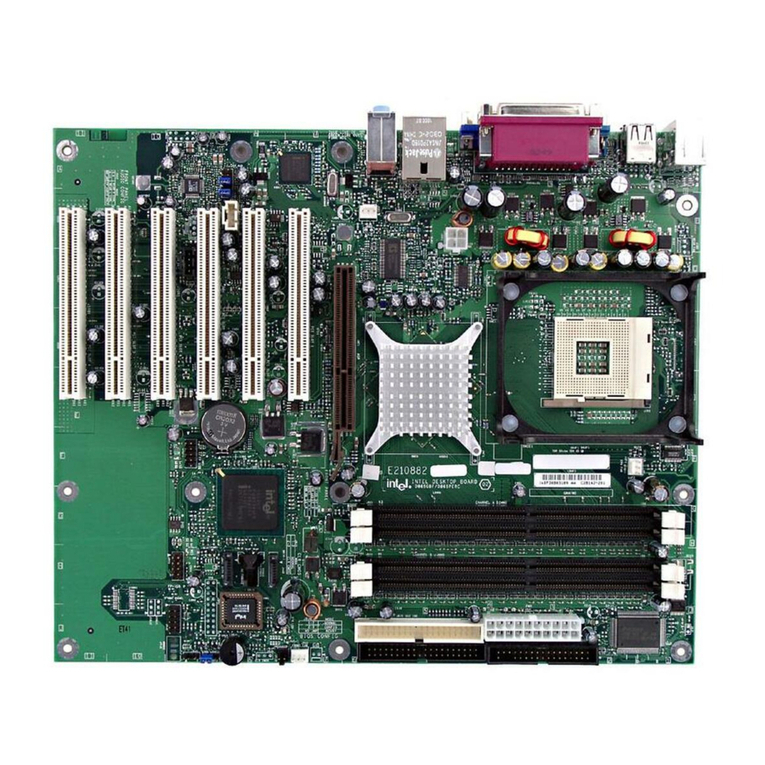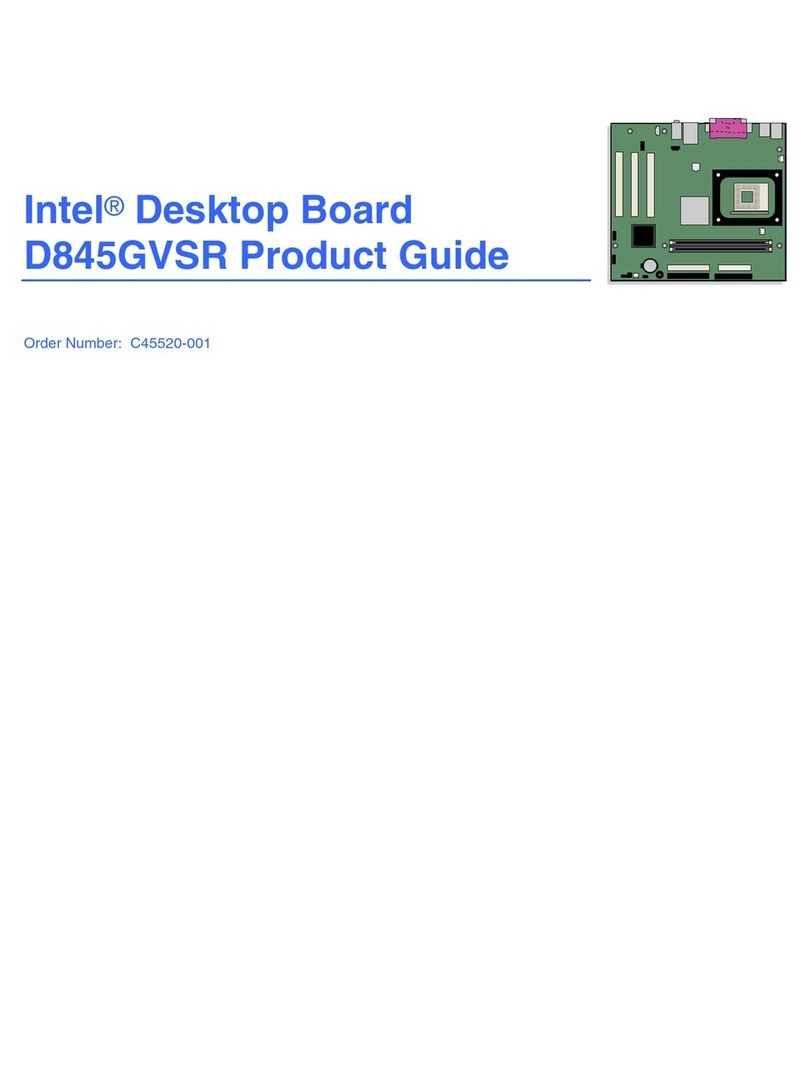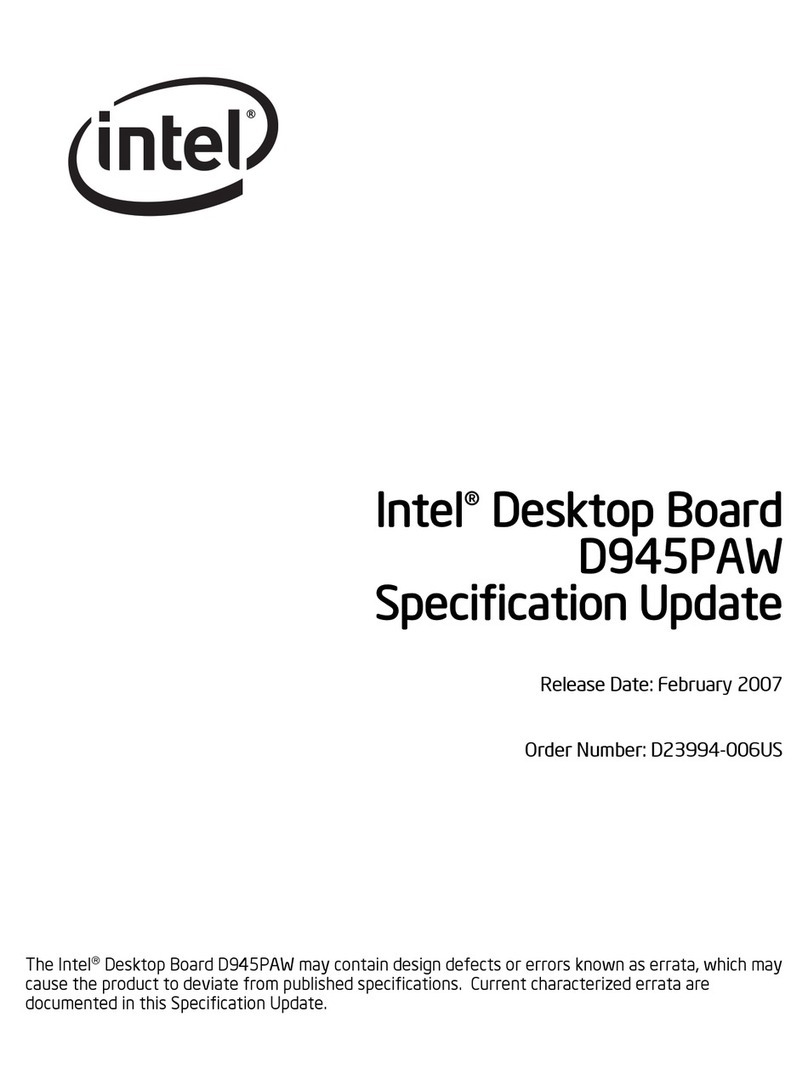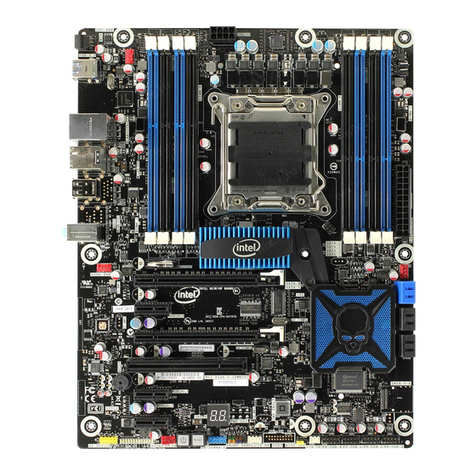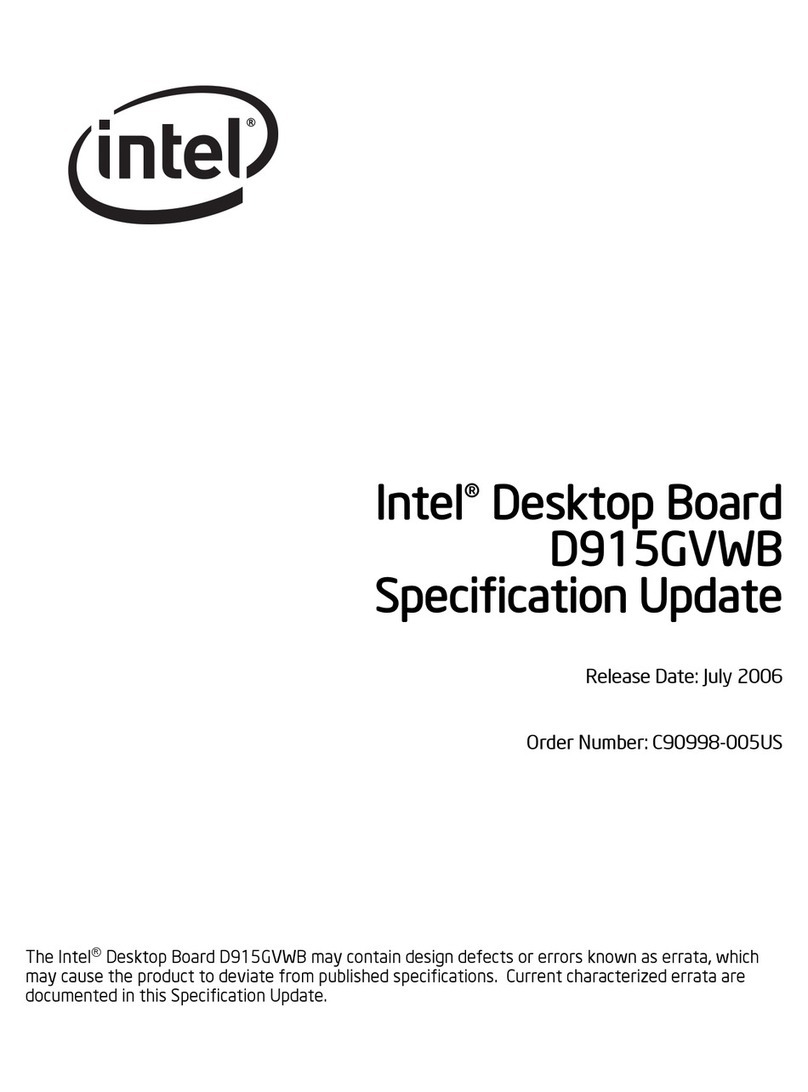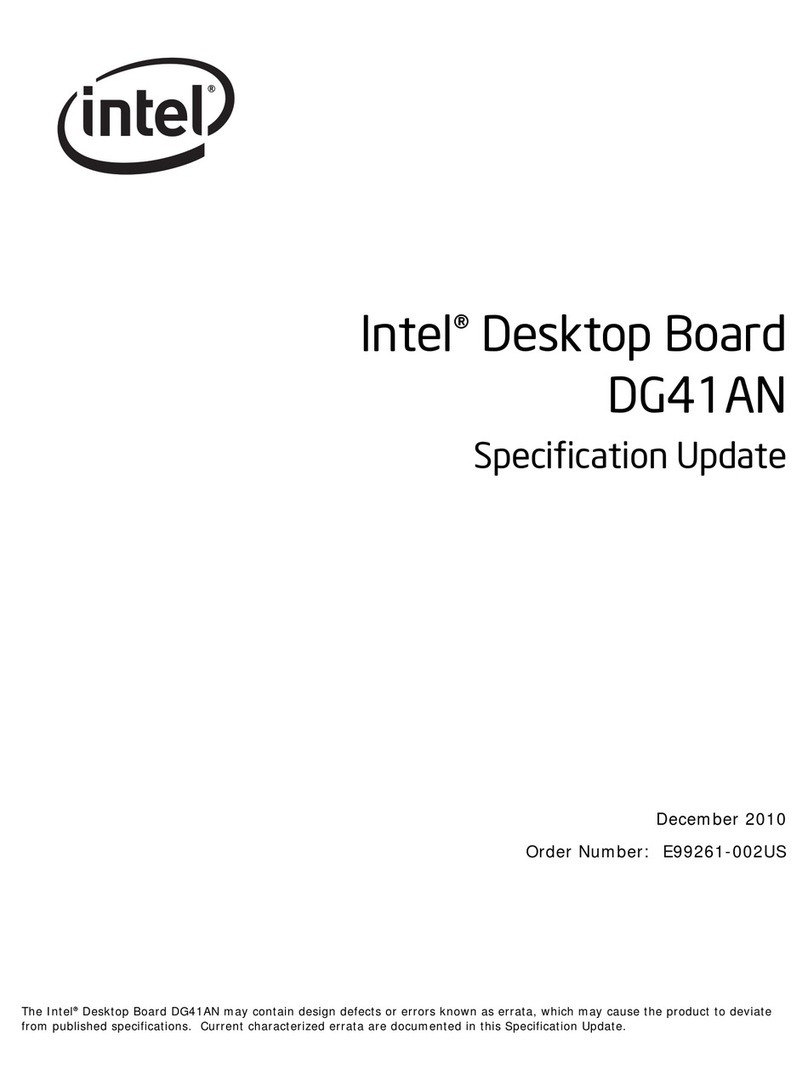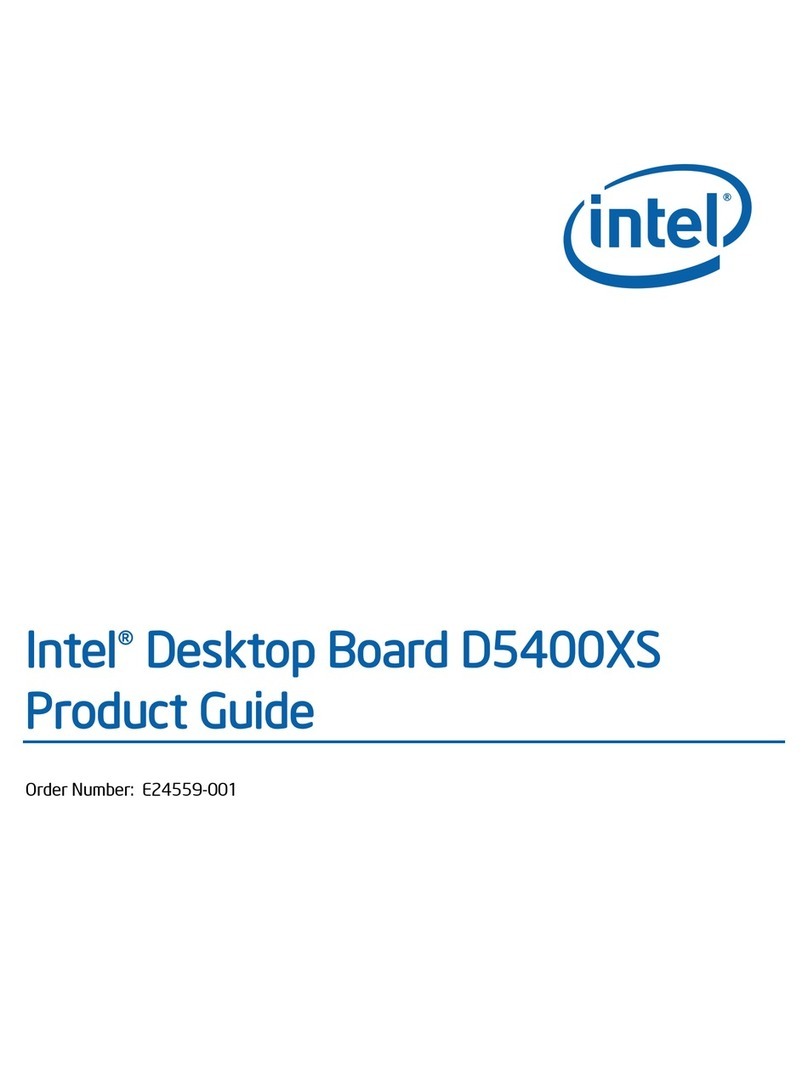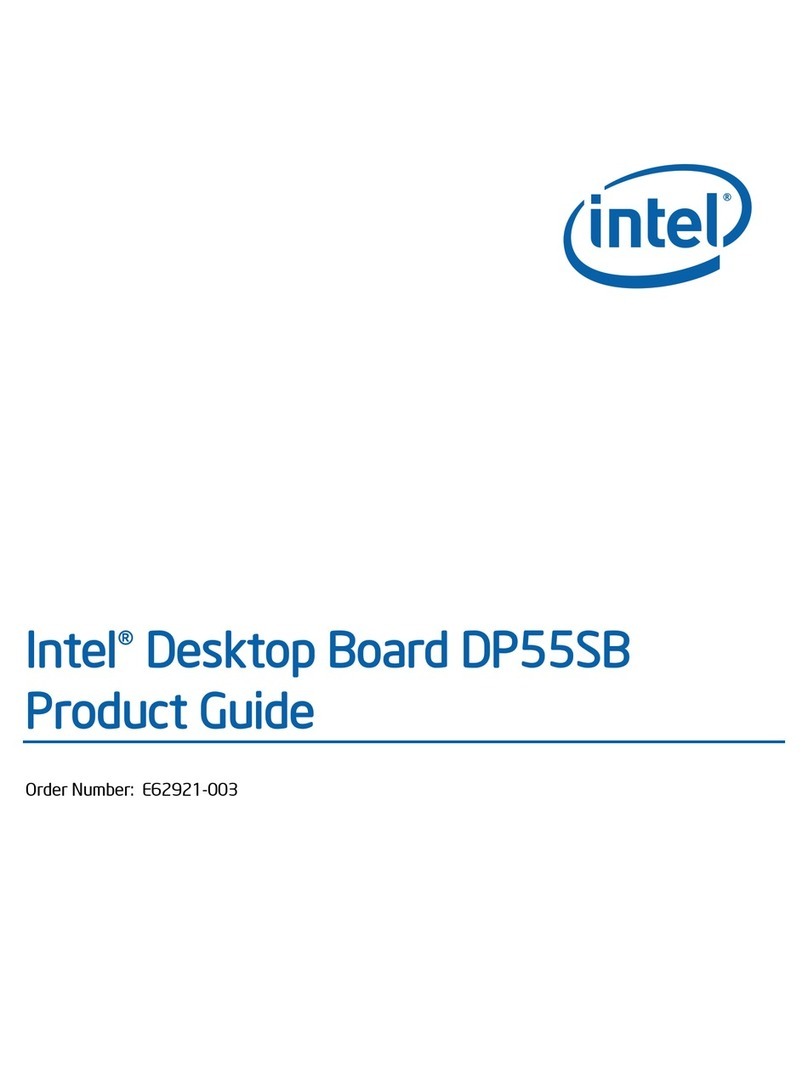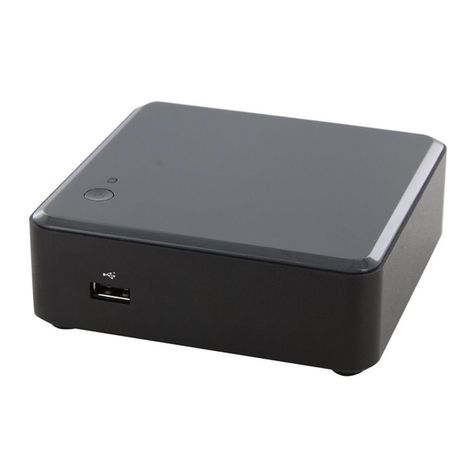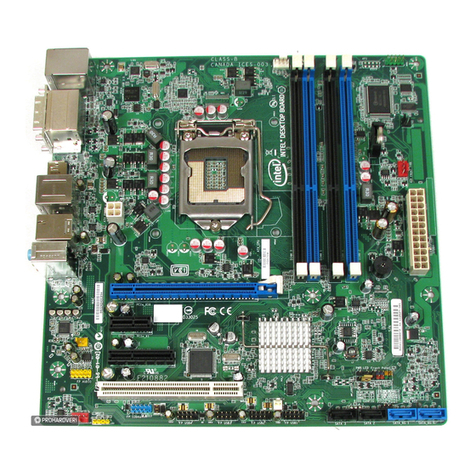
Evaluation Board User Guide | Intel Enpirion® Power Solutions: EN29A0QI
Page 2
EVALUATION BOARD INSTRUCTIONS
1) Input Supply (VIN) – Connect 9V to 16V supply on VIN
(J1). Pay attention to input polarity and do not turn on
until everything is connected correctly.
2) Ground (GND) – Connect the input and output ground
to GND (J2, J4).
3) Output Voltage (VOUT)– Connect the load to VOUT
(J3). If the instructions were followed up to this point, the
device may be powered on. Wait to turn on ENABLE
signal in case of using external ENABLE.
4) ENABLE (ENA)– ENABLE may be tied to AVIN through
a resistor or controller externally. If J6 is connected
between positions 2-3, ENABLE is tied to AVIN. Placing a
jumper in position 1-2 of J6 disables the device. An
external signal (3.3V/1.8V logic) may be applied to TP25
with J6 in position 1-2.
5) Output Voltage Settings (J8) - The output voltage
may be adjusted quickly by placing a jumper one of the
selections on J8. The voltages are pre-set by the
resistors R12, R13, R14, R15 and R16 which correspond
to 0.9V, 1.03V, 1.12V, 2.5V and 3.3V respectively. The
output voltage may also be adjusted to any voltage as
indicated by the equation for RBshown in Figure 2. The
frequency and compensation network may need to be
adjusted for best results.
V
OUT
VOUT
PGND
EN29A0QI
VFB
R
A
4kΩ
R
CA
C
A
V
FB
=0.6V
C
OUT
(150-1000) µF
GNDSNS
LOAD
COMP
R
E
R
X
C
RX
C
X
Figure 2: VOUT Resistor Divider & Compensation
Capacitor
6) Frequency Settings (J7) – The switching frequency
may be adjusted quickly by placing a jumper one of the
selections on J7. The frequencies are pre-set by the
resistors R21, R22, R23, R24 and R25 which correspond
to 0.65MHz, 0.75MHz, 0.85MHz, 1.2MHz and 2MHz
respectively. The switching frequency is adjusted to
match the recommended frequency for the set output
voltage. Tabe 1 shows the recommended frequencies
for some commonly used output voltages.
Table 1: Frequency Recommendations
VOUT (V) Frequency (MHz) RFREQ (kΩ)
0.75 0.5 60.4
0.9 0.65 46.4
1.03 0.75 40.2
1.12 0.85 35.7
1.5 1 29.4
1.8 1.25 23.3
2.5 1.6 17.4
3.3 2 13.7
7) Power OK (POK)– This is an open drain Power OK
flag, pulled up to VCC through R20. When VOUT is over
92% of regulation, POK will be pulled high.
8) Soft Start Capacitor (CSS)– The soft start capacitor
(C27) is 33nF by default and can be between 3.3nF to
680nF. The output rise time is controlled by CSS. The
voltage rise time calculation is shown:
Rise Time tRISE [ms] = Css [nF] x 0.03
CSS = 33nF tRISE ≈0.99ms
CSS = 330nF tRISE ≈9.9ms
9) Soft Shutdown Resistor (J5)– Placing a jumper on J5
enables soft shutdown. The soft shutdown resistor (R7)
is 6kΩ by default and can be between 6kΩ to 100kΩ. The
output fall time is controlled by RSTOP and CSS. The
voltage fall time calculation is shown:
Fall Time tSTOP [µs] = 3 x Css [nF] x RSTOP [kΩ]
CSS = 33nF, RSTOP = 6kΩ tFALL ≈594µs
CSS = 330nF, RSTOP = 10kΩ tFALL ≈9900µs
10) Optional Bulk Capacitors – Bulk capacitors may be
used on the output to improve load transient response.
However, the compensation network must be adjusted
accordingly. A downloadable compensation calculation
tool is also provided at EN29A0QI’s product page at
https://www.intel.com/enpirion for easier calculation
and optimization of the compensation components.
